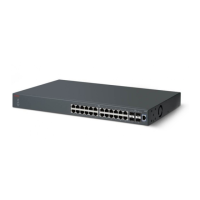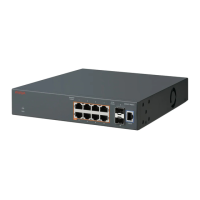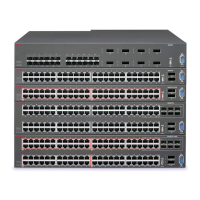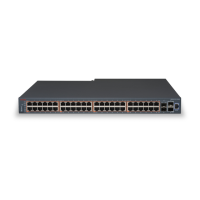Enabling or disabling AUR configuration saves
Use the following commands to enable or disable AUR automatic configuration saves.
Before you begin
AUR requires a stack configuration
About this task
You can configure AUR to enable or disable automatic configuration saves for non-base units.
Procedure
1. Enter Global Configuration mode:
enable
configure terminal
2. To enable AUR automatic configuration saves, enter the following command:
stack auto-unit-replacement config save enable
3. To disable AUR automatic configuration saves, enter the following command:
stack auto-unit-replacement config save disable
Removing MAC addresses from AUR cache
Use the following procedure to remove a MAC address from the AUR cache for a non-operational
unit.
Before you begin
AUR requires a stack configuration.
You require a stack of at least three units.
About this task
You can remove the MAC address of a non-operational stack unit from the AUR cache. A non-
operational unit can be a switch that is no longer present in the stack, or a stack switch that is being
restored within the stack. When you remove the MAC address information of the non-operational
unit from the AUR cache, the hardware information is retained in the AUR cache. The next unit
joining a stack that matches the unit hardware can replace the non-operational unit, regardless of
the MAC address. You cannot remove the MAC address of operational units.
Procedure
1. Enter Privileged EXEC mode:
enable
2. To verify that the stack unit is non-operational, enter the following command:
show stack auto-unit-replacement mac-addresses
3. To remove the MAC address of a non-operational unit, enter the following command:
stack auto-unit-replacement remove-mac-address unit <1-8>
Configuring the switch using ACLI
July 2015 Getting Started with Avaya ERS 3500 Series 81
Comments on this document? infodev@avaya.com

